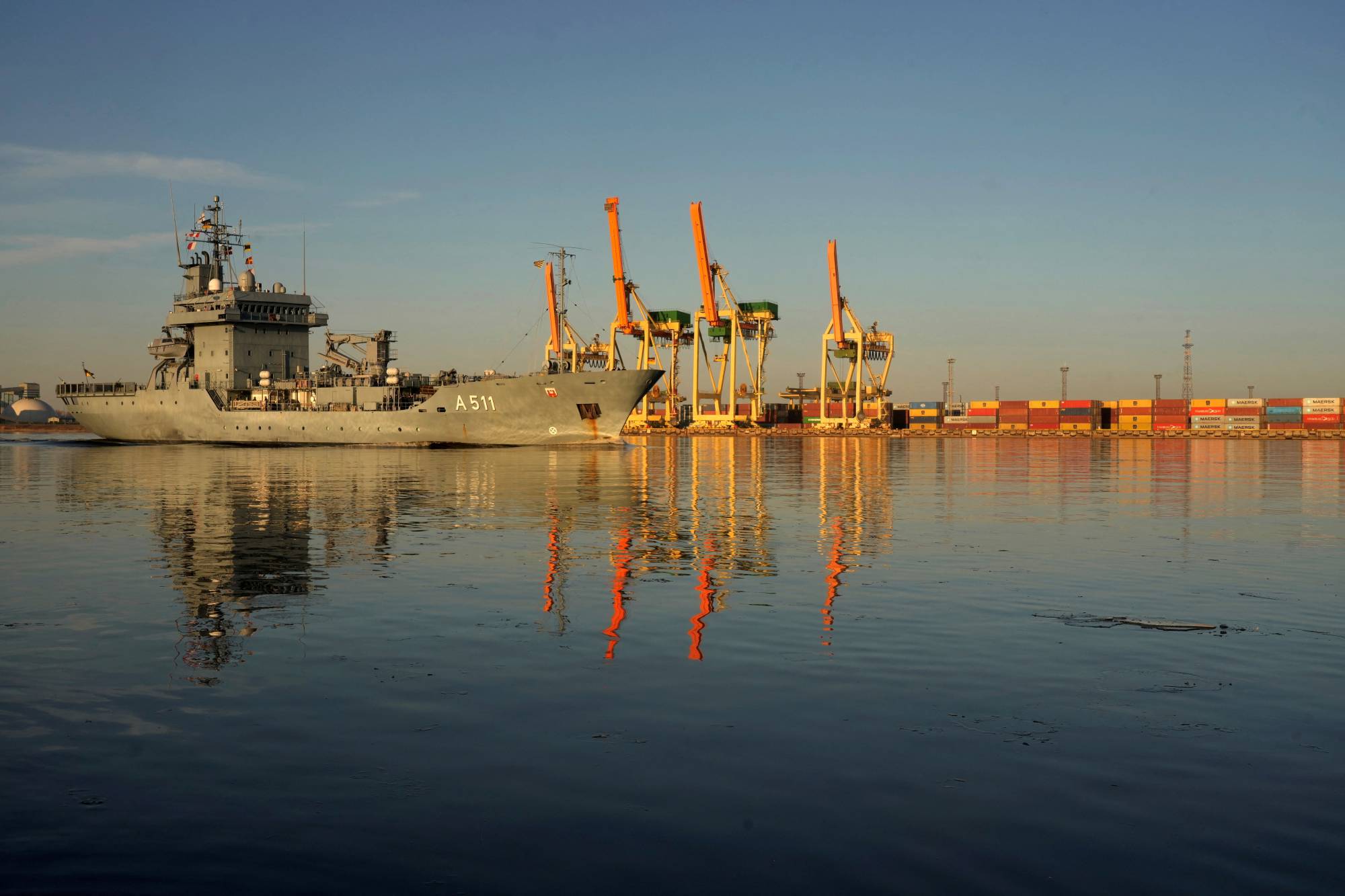Hours after Russian missiles first struck Ukrainian cities on Feb. 24, German naval Cmdr. Terje Schmitt-Eliassen received notice to sail five warships under his command to the former Soviet Republic of Latvia to help protect the most vulnerable part of NATO's eastern flank.
The hasty dispatch was part of Germany's scramble to send "everything that can swim out to sea," as the navy's top boss phrased it, to defend an area military strategists have long deemed the weakest point for the alliance. The vessels' sudden departure demonstrated how NATO, and Germany, were propelled by Russia's invasion into a new reality and face what officials, diplomats, intelligence officials and security sources agree is the most serious threat to the alliance's collective security since the Cold War.
Schmitt-Eliassen, who is based in the German Baltic port of Kiel, spoke on the flight deck of the supply ship Elbe. Moored next to it, within sight of the church towers of the Latvian capital Riga, were a Latvian and a Lithuanian ship. Vessels and sailors from nations including Denmark, Belgium and Estonia were due to join the group later.



